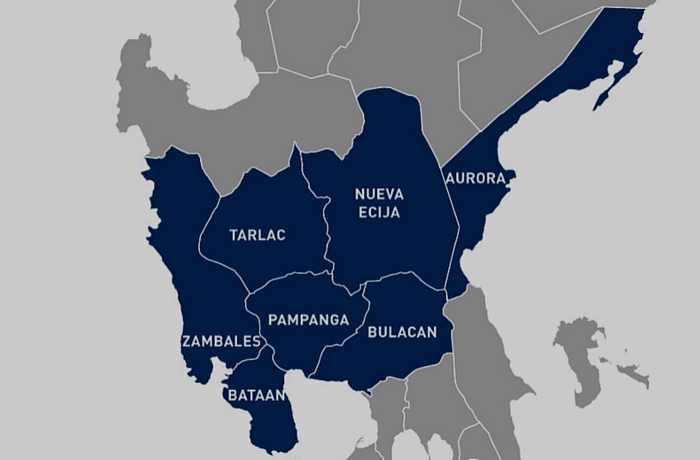Central Luzon: The next growth frontier
MANILA, Philippines – With the Philippine economy on a sustained growth track, pushing development outside the capital has become a national priority as Metro Manila is now bursting at the seams.
Central Luzon, with Clark as its hub, is ready to lead the next wave of growth.
Clark is less than two hours away from Taiwan, southern China, Hong Kong and Macau, and only three hours away from Japan, Thailand, northern China and Singapore by plane. Sitting astride the NLEX and SCTEX, the city is only 30 minutes from the newly expanded Subic Bay deep-water port. Under this administration, the well-connected city is poised to raise its profile further; with the revival of the Manila-Clark railway route, Clark will transform into even more of a destination.
Clark Gateway City rises
Atop one part of the old US Airforce Base and adjacent to Clark International Airport is a 177-hectare site that’s transforming into an important commercial and logistics hub. With the incomparable advantage of its strategic location, Clark Gateway City is one of the largest development sites in Luzon and already has easy access to air, sea and land connections. Clark Gateway City is close enough to Metro Manila for its residents to benefit from its concentration of businesses, but distant enough not to suffer from the congestion consuming the capital.
Clark Gateway City is the brainchild of Global Gateway Development Corp. (GGDC), an international firm that developed the fully master-planned property. As their answer to Metro Manila’s Bonifacio Global City, GGDC has built the site to the highest international standards of quality, safety and design.
According to Mark Williams, CEO of GGDC, the master plan provides for parks and open spaces that, in addition to the site’s prime backup generators with seven-day backup fuel supply, onsite water wells and storage, grey water reclamation and modern sewage system, keep the city livable, disaster-ready and minimize its environmental impact.
As a sign of what’s to come, The Medical City hospital opened in Clark Gateway City in 2014, bringing the best of the Philippines’ healthcare into Clark and Central Luzon. Close by is the growing campus of the University of the Philippines in Clark. Once an extension of UP’s flagship campus in Diliman, UP Clark is being expanded into a three-hectare permanent campus.
Moreover, the government is featuring Clark as the site of the 31st ASEAN summit when the country hosts the gathering in November 2017.
Development backbone
The backbone of the country’s remarkable growth story is its demography. The 100-million strong population is projected to reach 123.6 million in 2030 and 148.3 million in 2050. Over a third of the population is under 15 years old and only five percent is over 65 years of age. These factors distinguish the country from its more development Asian neighbors, including China.
The Philippines’ young, highly literate, and English-speaking population has been a driving force behind the country’s growth as the chief attraction of the BPO industry. From revenues of only $1.4 billion in 2004, the industry earned $18.9 billion in 2014 and $21.2 billion in 2015. The country is considered a global leader for voice BPO operations, and is increasingly so for non-voice operations. In 2014, investment advisory firm Tholons identified Clark and six other Philippine locations as part of the Top 100 BPO destinations worldwide. Clark-based BPOs can draw from the more than 60,0000 new graduates in Central Luzon each year. The graduates come from over 220 colleges and universities in the region, which enjoys a lower cost of living than the National Capital Region.
Congestion in Metro Manila
Long the center of the Philippines’ commercial activities, Metro Manila is straining to accommodate a growing population and business activities. The capital has outgrown the capacity of its infrastructure designs, and Metro Manila has known inadequacies in its transport systems. As the metro grows, residents suffer from long commutes, poor air quality and higher costs of living. The congested airport is landlocked and has no further room to expand.
In line with overall economic growth, demand for office space has outpaced the rise in supply. In 2014 alone, over 470,000 square meters of office space was added in Metro Manila. Despite this, vacancy rates have been on the decline, reaching figures as low as four percent. With Manila’s capacity close to its hilt, the country’s BPO sector is approaching a crossroads. The industry is estimated to have employed up to 30 percent more people between 2014 and 2016, growing from one million to 1.3 million people. According to NEDA, the sector is on-track to be a $100-billion industry by 2020, equivalent to a fifth of the global market.
Competitive advantage in Clark
To get there, however, new companies will need to take advantage of locations and labor outside of the capital. Here again, Central Luzon has an advantage. As the third-largest region in the Philippines, it is host to 11.1 percent of the country’s population, comparable with the 12.75 percent of the National Capital Region. Despite that similarity, the NCR is about 40 times more dense, with a population density of 20,785 people per square kilometer as opposed to the 512 per square km of Central Luzon.
Thankfully, there is broad-based agreement over the need for significant investments in infrastructure and nationwide connectivity. This administration is committed to an P8-trillion infrastructure spending program that highlights transport links outside the capital—the revived Manila-Clark railway among them.
The future of the Philippine economy is outside the capital, where the space and people are available to lead the next wave of growth. Over the next 10 years, as the Philippine economy grows and its young middle class grows with it, Filipino and international businesses and workers will be catering to larger markets and will require proportionally larger, more efficient, and better connected environments to keep up the pace. |

